When you’re just starting out and setting up your homestead there are a lot of things that you need to think about. We all have big aspirations of what we want to do on our land, but there is a lot of work that needs to go into it all before we can really do anything.
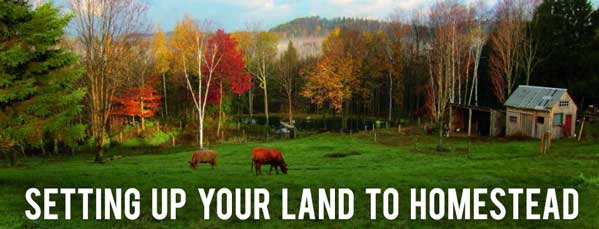
In some cases we are coming into a piece of property, or our property that we already live on has certain elements, layouts or assets that we need to work with or around. While I am always looking to capitalize on what I already have in place, I’m also not afraid to make changes or remove something if it doesn’t work in the way I need it to.
Get A Plan In Place
When it comes to setting up your land, I always ask myself a few key questions:
- What is the land telling me?
- What are the very specific things I want to do on the land?
- What are the workflows that are going to happen on the land?
- How can I reduce effort, improve ergonomics, and make it more efficient?
- How can I design it to be flexible?
These are some really important questions to ask yourself because if we are just starting out, we can nail these few considerations and make our lives easier, our design will work for us, we will have less frustrations, and we can prevent burnout or injuries.
What Is The Land Telling Me?
 When it comes to setting up land or starting on a new piece of property we need to make some observations before we begin. If you have the chance, try to live on the land for a year before committing a lot of time or money. It also gives us time to take a bunch of soil samples and get them analyzed. That isn’t always possible, but if you can manage it, it’s well worth your time.
When it comes to setting up land or starting on a new piece of property we need to make some observations before we begin. If you have the chance, try to live on the land for a year before committing a lot of time or money. It also gives us time to take a bunch of soil samples and get them analyzed. That isn’t always possible, but if you can manage it, it’s well worth your time.
By taking the time to see how each season works with the land you’ll understand it’s character. You’ll learn where the warm sunny spots are and where cold air settles in low spots. You’ll learn where water pools in the rainy season, where it soaks into the ground well and other areas that it just seems to sit on the surface for a long time. All these things tell you how the land naturally behaves and it’s our job to work with that, not against it.
Two things I’ll do on a new property is in the cooler months, go walking in shorts despite the cold. This let’s me sense with my legs what parts are warmer or colder than others. If it starts to rain a whole lot, I’ll put on a rain jacket and go out walking; looking for how the water flows on the land, where it pools, where it gets boggy. All these things are helpful in your planning.
What Are You Going To Do On The Land?
 Before we even begin to plan what our homestead is going to be like, we need to know what we are going to do on that land. We can’t figure out a direction to walk if we don’t even know where we are going! Take the time to be honest about you and your life. If you’re going to homestead and work a full time job, what can you honestly dedicate to your farmstead when you’re pulling 40 or 50 hours a week?
Before we even begin to plan what our homestead is going to be like, we need to know what we are going to do on that land. We can’t figure out a direction to walk if we don’t even know where we are going! Take the time to be honest about you and your life. If you’re going to homestead and work a full time job, what can you honestly dedicate to your farmstead when you’re pulling 40 or 50 hours a week?
Plan for your worst day, not your best day. When you’re tired from work, it’s raining out and very cold in January, what do you want your life on that land to be like on that day where you want to do nothing? If you plan for that, every other day will be a pleasure and it will make it viable for the long term.
When I was planning my future homestead I realized that a lot of what I thought I wanted to do just didn’t fit with my lifestyle. I wanted to travel some, not have to wake up at the crack of dawn, and have a place that I could easily keep up so I could relax sometimes. This meant certain things were ruled out and other things became more realistic. What life do you want to lead on that land?
What Are The Workflows?
If we are planning to homestead, we are the kinds of people that don’t shy away from hard work, but that doesn’t mean we shouldn’t be smart about our work either. I started out with a list of everything I wanted to do on my homestead and then broke each one down into that activities and actions that needed to take place for those things to happen.
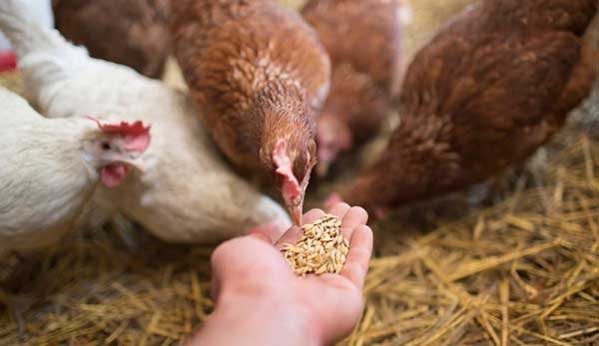
We want to be super efficient and be smart about everything we do, because there is never enough time in the day and a little planning up front will pay off big on the back end. So come up with your list and then start to envision in your mind how you’re going to do everything. What are you doing, what do you need to do those things, where are you lifting, moving, pulling, pushing. Play out these things in your mind to figure out how you’re going to do work on your stead.
Reduce Effort, Improve Ergonomics, and Make it More Efficient
We want to be smart about how we get things done on the farm. A really great primer to this way of thinking is 2 second lean principles, which we did a post on. On our farm, we want to always be looking for ways to be better, work smart and reduce possibility of injury.
An example would be chickens. Let’s say you want 5 birds in a chicken tractor, in my mind I’d play out a day in the life of taking care of them. I wake up at my normal time and get ready. I walk out to the tractor, it’s raining outside so the ground is wet. I go to a bin in the garage to get their feed and fill their feeder which is clogged so I have to climb into the tractor, and I drag the hose across the yard to top of the waterer. I reach into the nesting boxes to get any eggs and I move the tractor a few feet to fresh grass.
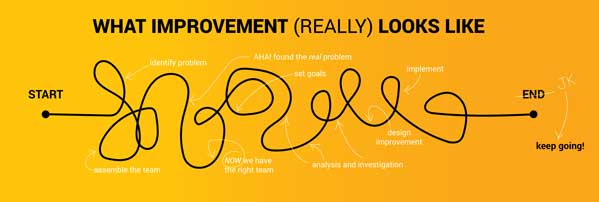
So from this example I’d analyze what work happened and how I might make it better. Starting out with it’s raining and the grass is wet (remember plan for your worst day) it would be really good if I had some farm boots to wear out to the coop so I don’t get my professional job shoes dirty and wet. I needed to get some feed, where did that feed come from? Is there a way that I could back my truck right up to where I need to unload it? Do I have to bend or lift things, is there a way I could reduce it or prevent injuries/strains?
Is there a way to locate the feed and water closer to the chickens? I might consider if a mobile coop is worth it, or would a fixed coop allow me to run a water line to it and have a little storage area right there to keep feed in and back my truck bed right up to it? If I have to get in the coop, maybe it’s better to make it 6 feet tall so I don’t have to stoop inside, and how can I set it up so I don’t have to go inside often and cleaning is a breeze?

Think through all these things, look for places where a tweak can save your from extra work, walking back and forth, repetitive tasks, or not having things right where you need them. If we are starting from scratch, let’s make our lives easier!
A Flexible Design
When we are starting, out we are operating under a lot of assumptions and even with careful planning and experience, we may find that our plans need to change. Being flexible is a huge part of being able to solve problems and as homesteaders at our core, we are good problem solvers.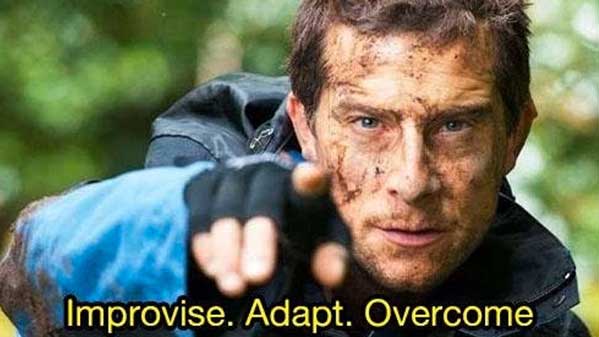
If I’m spending time to build something, paying money to install something or other big decisions, I ask myself what if I had to move this, change it or expand it? If we ask these things we can think about the future and bring flexibility into our design.
A real good example is running water lines for spigots. When I ran mine I had the trencher rented for a day. That meant I could keep trenching to add more hydrants. At that point adding 100 feet more of water line and putting in three more hydrants was very easy and pretty cheap. Hydrants are $70 each and I can buy a 100 foot roll of pex for $40. So I ran my water lines where I needed them, then added one in the back corner, one near where I could build another garden bed in the future, and one next to my driveway to wash my car.
Think about if you had to change things, move things and what happens if my plans don’t work.
Access Is Key
There are a few things I always look for when considering land and access is critical. The first step to getting the land to the point where you can live on it is simply being able to access it. This comes in the form of roads, driveways, turnarounds and parking pads.
Before you even think about laying down the road, you must first clear the way, remove trees, level the dirt and make your path to your new home. You have a couple of options: gravel, cement, and asphalt. Gravel is the most economical and I’ve found if you know how to build a gravel drive properly it can last for a long time.
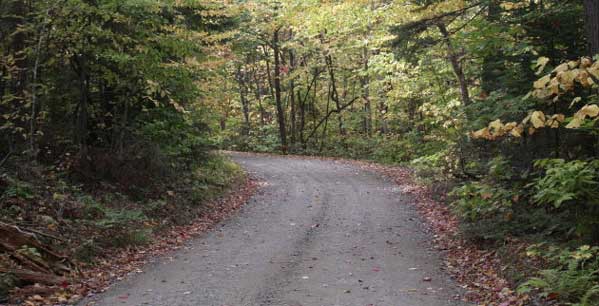
Always go bigger than you think you need. You want to make sure that you can easily fit a dump truck, cement truck or trailer and have good places to park and turn around for the bigger vehicles and trailers. I would also clear 4 to 5 feet on either side of the driveway and grade it somewhat. When you open up the woods you’ll find that trees start to push into the opening as they make a bid for sunlight, this will give you a buffer so you don’t instantly need to start cutting it back. I give myself this buffer so I can just run a bush hog down either side and make quick work of it.
Here is a video of the installation of my road, turnaround and parking pad. Note I had a much easier time because there used to be an old dirt road in this location, so it was simply a matter of cleaning it up and leveling it out. The whole process took about 6 hours of hard work.
If you allow 4-5 feet on either side, you can give yourself room to trench utilities into the property without tearing up your road and make it easier when repairs are needed. I always try to put my sewer on one side of the road and drinking water on the other. For power lines if buried, I try to put power on one side of the road and data/phone on the other so there is no EM interference.
Infrastructure
There are a few things that are critical to actually making a piece of land or a home viable, this all comes down to installing critical infrastructure right off the bat and doing it the right way. This is one of those things that doing it half measured is not going to cut it. The saying is “buy one, cry once” and when it comes to getting your infrastructure in, this couldn’t be truer.
Water
No matter what you’re going to do or how you’re doing it, you need to have a very reliable, high quality water source that brings it right to where you need it. I have seen people who tried to save a few bucks, had a water truck deliver water to them, do water catchment, try something alternative or temporary and it never works out. If you can get tied into a municipal water line or have a good well dug for you, I’d save up for it or skip that land. Water is life and you can’t compromise on it, you’ll just end up frustrated, broke, and doing it the right way like you should have the first time.

For water I am connected to the city water. The meter and installation cost me $2,200 (city sets price), but that is only from the water main to the closest edge of your property. You then need to connect it from there to your house, which, for me, was $700 for materials, $800 for ditch witch rental, and $1500 for a plumber to do all the connections, fittings and other tasks. For running water lines; once you have your main connections you can do most of the work yourself and it isn’t too difficult if you’re willing to work hard. I used PEX water line and ring crimps, buried below the frost line and frost proof hydrants for hose connections.
While you have your trencher, go ahead and future proof your system, put in a few extra connections, make sure you bury everything below the frost line and I’d recommend not using PVC or Poly Tube; go with PEX, it’s much more durable and cheap too!
Power
Having power is another major consideration you need to make. In some cases getting tied into grid power can be expensive. Other times they will run the power line for free. This is one of those things that I’d save up for and do it right the first time. I currently live off the grid with my power, getting it only from my solar panels, but there are times where a grid connection would be nice.
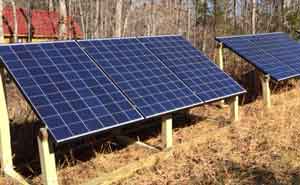
Heating (air, stove/oven, water heater) and cooling take around 60%-80% of a home’s power consumption, the rest is all pretty easy. If you’re going more off grid, starting out smaller is better and making sure your system can scale. Check out my post on how I set up solar for my home here.
Since we are on a homestead consider if you need certain special hook ups like a 220 volt outlet for a welder, a 50 amp plug for a tiny house or camper, or running power to different parts of the yard where you need it. Again, when you’re trenching it’s often just a little extra work and a few hundred dollars to add extra hook ups. When I trench for power I try to put it on the edges and go a little deeper so I don’t have to worry about hitting the line with a tiller.
Places to consider to run power are: to your outbuildings or workshops for tools, finding things in storage or for those late nights of work. I’ll also make sure I have lighting to illuminate areas I have animals really well; in case a predator is lurking I can flip on some really bright lights to spot them quickly. In some cases it’s good to have power near the pens and paddocks so you can power a waterer to stop from freezing, a power washer for cleaning or corded tools for repairs.
I’ll also light areas for my infrastructure: a well, septic pumps, driveways, and other areas that if something breaks down I can flip on a good light to see what I’m doing while I fix it. Additionally consider some motion detection lights so that if someone wanders on to your property it will light them up and keep thieves at bay.
All these things can be done more easily ahead of time with some planning and for a cheaper cost since you already have trenchers or trades people on site.
Sewage
There are a few ways to handle this, it mainly depends on your local laws, so be sure to check with your township on what the rules are. For many it will either be a septic or city connection. In some cases you may be using a composting toilet or even an outhouse; these are often subject to local laws so make sure you know what you can and cannot do.
Internet/Phone
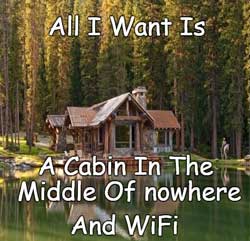 While this may not be at the top of musts for most people I like to include it here because often when you’re setting up everything else, it’s a good time to get this setup as well. Having a connection to the outside world will allow you to set up security cameras to keep an eye on things while you’re away, or may allow you to work from home or remotely for better job opportunities. Your homestead may start selling things and online order, customer emails/call and website stuff are easier when you have a connection. Finally in many rural areas cell phone signal isn’t great, so being able to watch a YouTube video or call for help is a consideration.
While this may not be at the top of musts for most people I like to include it here because often when you’re setting up everything else, it’s a good time to get this setup as well. Having a connection to the outside world will allow you to set up security cameras to keep an eye on things while you’re away, or may allow you to work from home or remotely for better job opportunities. Your homestead may start selling things and online order, customer emails/call and website stuff are easier when you have a connection. Finally in many rural areas cell phone signal isn’t great, so being able to watch a YouTube video or call for help is a consideration.
Outbuildings, Animal Shelters And Storage
With any property you’ll need a place to put things, store things, or covered areas to work on things that you don’t want inside your house. For me I have a place to keep all my tools, gardening supplies, lumber and things I need to work the land. If you have animals, they’ll need housing appropriate to them. You’ll need storage for feed and hay, and other things to raise those animals.
If you have equipment like lawn mowers, tractors, generators etc you want to make sure those can be kept out of the elements. These expensive pieces of equipment can be made to last a lot longer if they aren’t subjected to the rain or snow.
Fencing
One major cost that people don’t anticipate is fencing. If you have a large property a good fence around the perimeter is a large cost even if you do it yourself. I try to get my fencing setup so I can run a bush hog or mower on either side of it while still being on my property. This will make maintenance easier, define your property line, and allow you to walk or ride along it regularly to make sure no breaks have happened.
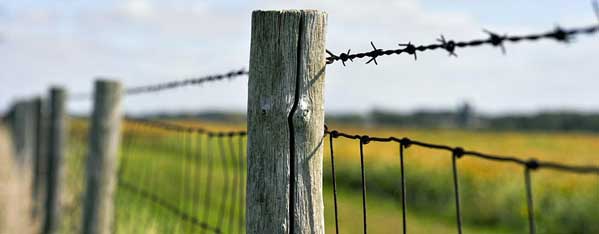
So those are some things you need to consider when it comes to setting up your land for a farm, a homestead, or a tiny house. Keep our basic tenants of learning from the land, having a solid plan, focusing on work flow and staying flexible and you’ll have a great piece of land that will work for you.
Your Turn!
- What are you plans for starting a garden, farm, or homestead on some land?
- What have you learned at tips and trick when setting up your land?
I would be interesting to discuss about zoning, land leases, topographical maps and flagged wetlands
Thanks for this article. I grew up on what was then called a Farmette; a little under 10 acres. I guess you couldn’t call it a Homestead, but my parents grew up during the depression and they grew most of their own food (my Dad was a butcher by trade) and an avid vegetable gardner and fruit tree and nut tree arborist. My Mom was a wonderful cook and she canned and preserved what Dad grew. We had a few horses, and it was an all-around wonderful way to grow up (with the possible exception of hay bailing time). I kind of wish I had chosen that life for my kids instead of the suburban yuppie nonsens of “bigger, faster, more.”
What a post? It’s very informative post. Thanks for sharing.
Superb post. Thanks
GREAT article! Thank you! We bought 15 acres to start a homestead on and these ideas and systems are exactly what I need to consider!
I have a plan running thru my head, with a focus on a permaculture lifestyle. I want to have the things that need daily attention (animals/gardens) close to the house and things that don’t need as much attention further away (orchards).
I am planning on starting small with a few chickens and maybe a couple of raised beds to get accustomed to the winter conditions of the area we purchased, but I’d like to work my way up to raising a few pigs each year. Due to the aromatic qualities of those critters, I’ll need a pig pen and grazing area away from the house, and downwind!
Thanks for the information!